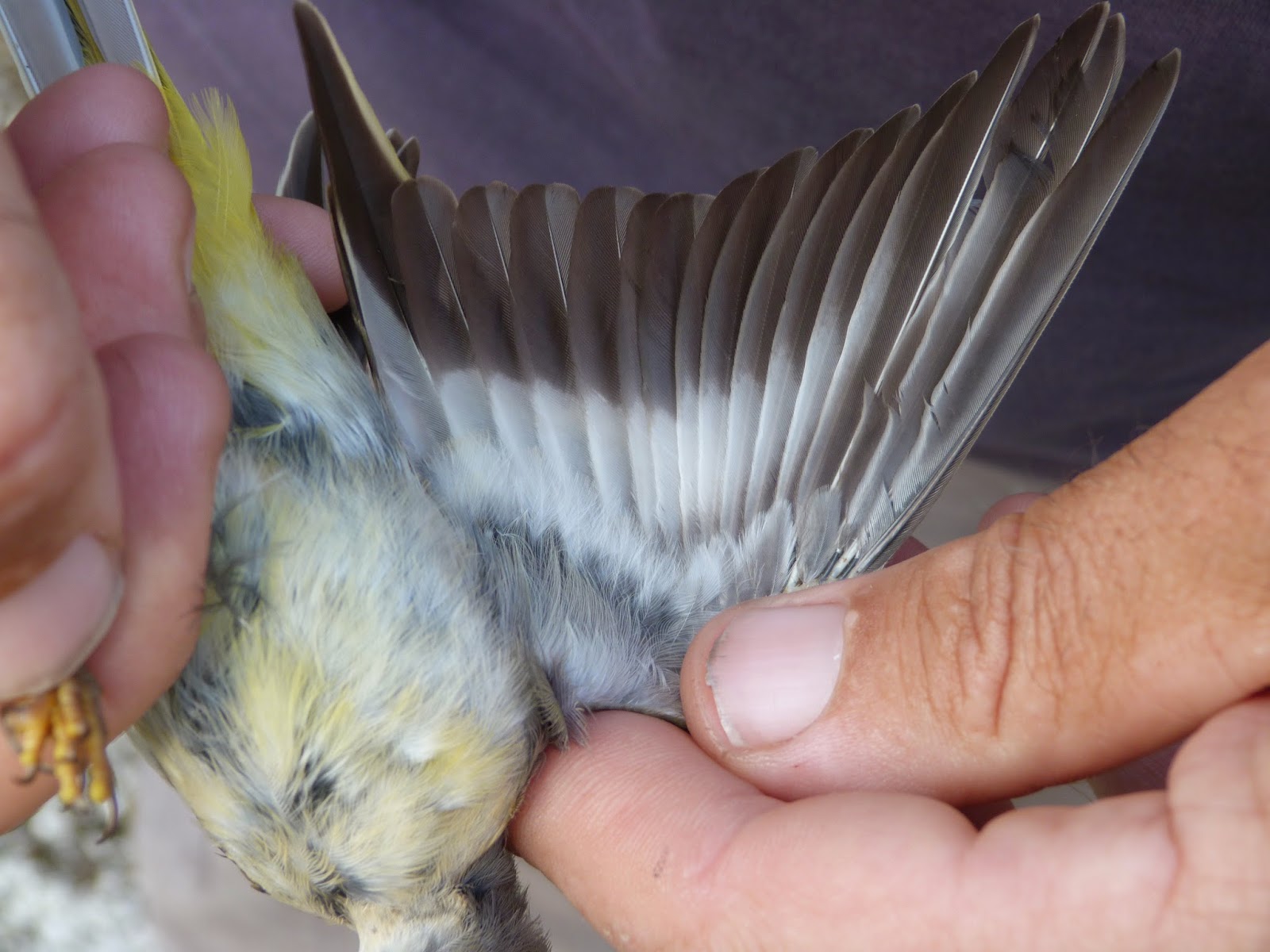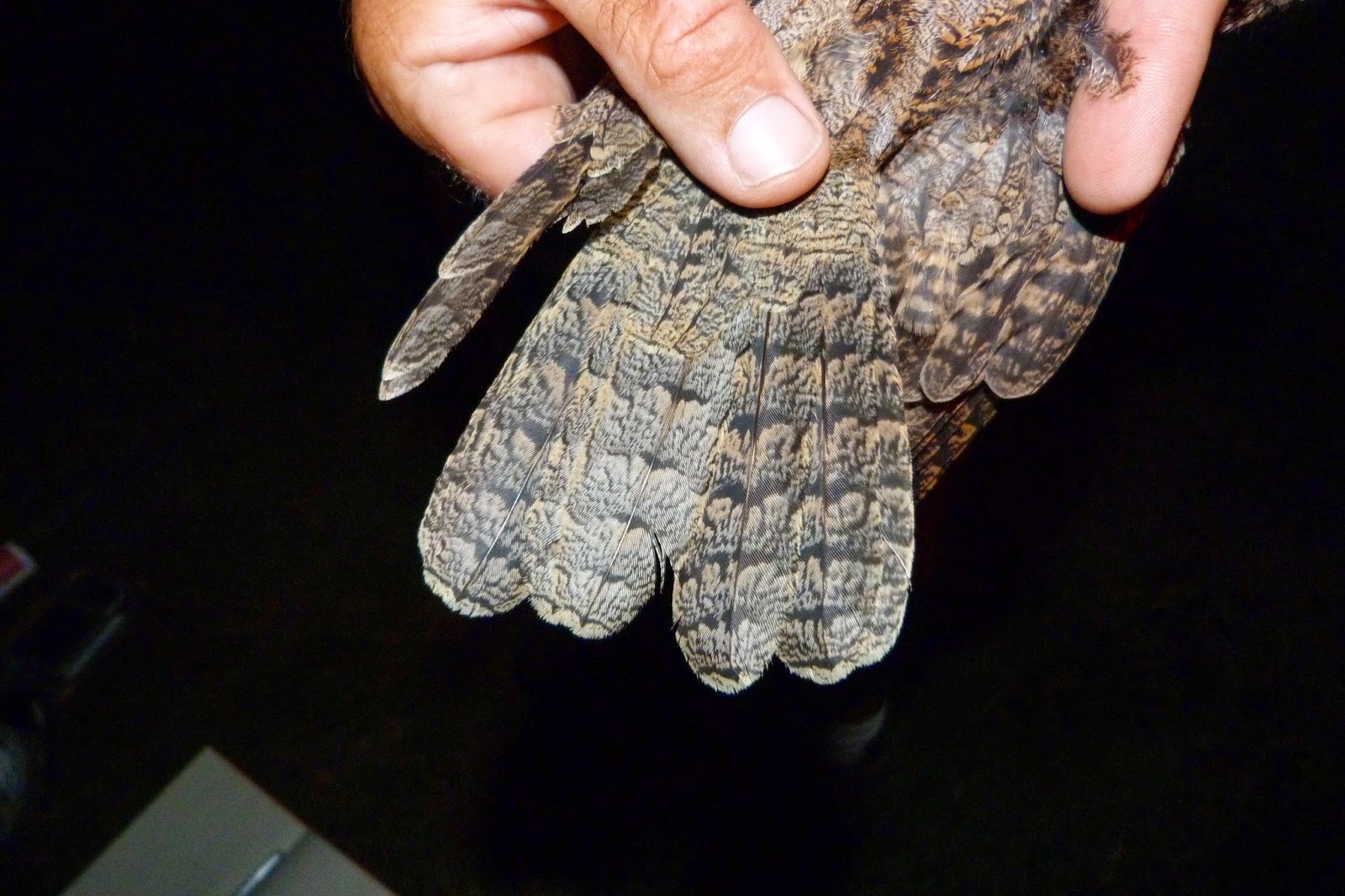We returned to the common, joined by EE this evening,
to continue monitoring the Nightjars. This is ongoing work undertaken by our ringing group on behalf of the Wildlife Trust. We arrived in plenty of time and caught
three Goldfinch and a juvenile Stonechat before the light began to fade. There
were also close encounters with a Tree Pipit and Sparrowhawk, but they
evaded capture despite the first walking under the net at least twice and the
other perching on a nearby fence and staring straight at the net before turning
round and flying away swiftly.
We began playing for Nightjar at 9.45pm and we soon heard
churring from the direction of the railway track, then saw a male fly over one
net and around our general area for a short while. We had glimpses of at least
two birds as they continued their crepuscular activity with calling, wing
clapping and churring heard at a distance. One bird was seen to alight on fence
post just 40 feet from our base before flying off and a Woodcock passed just a
few feet above one of the nets but was in strong flight and showed no
interest in our immediate area.
It was just after 10pm when EE went to check one of the
doubles and happily returned with one of these fantastic birds.
The Latin name Caprimulgus europaeus , from capra – nanny
goat & mulgere – to milk, hence the name ‘Goatsucker’ referring to an
ancient myth that Nightjars suckle from goats. Other old local names alluded to
Nightjar diet ‘dor hawk’ or ‘moth hawk’, habitat ‘fern owl’ and song
‘Churn Owl’. The name Nightjar was first recorded in 1630.
These birds have a breeding range that extends from the UK
to north central Asia. Other subspecies cover north-west Africa and southern
Europe (meridionalis), Kazakhstan to Kyrgyzstan (sarudnyi), Iraq and Iran east
to Uzbekistan (unwini), north-western China and western Mongolia (plumipes) and
north-eastern Mongolia (dementievi). All are migratory with birds wintering in
west or east Africa.
The huge breeding range and population mean that this
species is classified by the International Union for Conservation of Nature as
being of Least Concern. However, on the edge of its range in the United
Kingdom it is red-listed as a cause for concern, and in Ireland it is close to
extinction. In Britain , commercial forestry has created new habitat which has
increased numbers, but these gains are likely to be temporary as the woodland
develops and becomes unsuitable for Nightjars.
Chobham Common provides a habitat for Nightjar that will
remain consistent (as it is managed by the Surrey Wildlife Trust). Disturbance
from other users, particularly dogs exercised off the lead, is always a
concern for any ground nesting bird, but we were pleased, on examination, to have
our first confirmation that successful breeding had taken place in 2014. The
juvenile had begun its post juvenile moult and was feathering up very nicely.
Juvenile Nightjar
By 10.30pm we were no longer hearing Nightjar so packed up
and were off site by 11.20pm.
Totals: 5
Nightjar - 1
Goldfinch - 3
Stonechat - 1























































